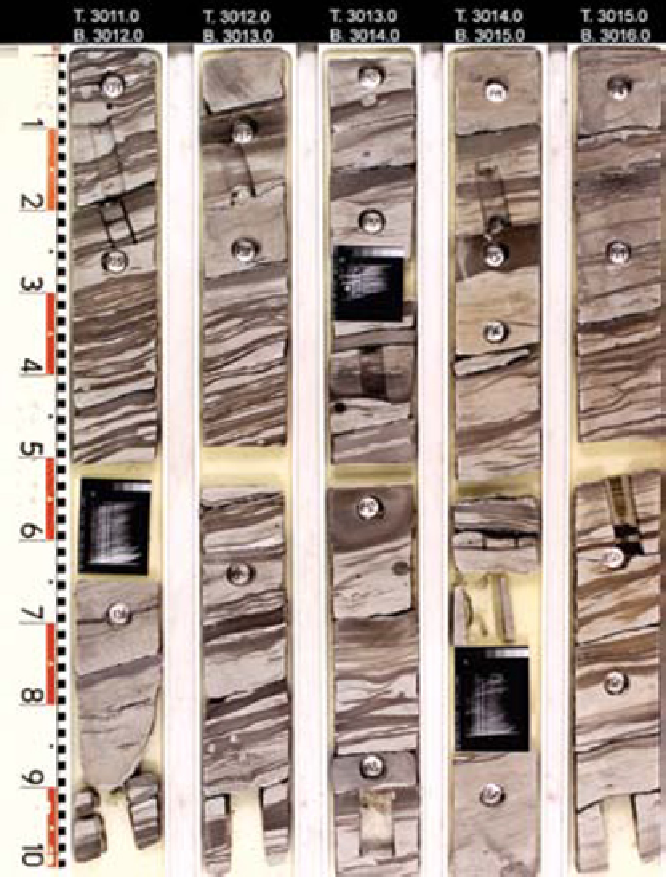Geoscience Reference
In-Depth Information
Fig. 20
Core expression of the hetero-
lithic tidal channel facies (FA 10;
Fig. 19) characteristic for the Åre
6.2 Sub-zone. The sandstone com-
prises both wave and current ripple
cross-lamination showing single and
paired mud drapes. (Example from
well 6507/7-A-22. Ruler is 1.0 m long).
Decimetre-scale cross-strata characterise the sand-
iest deposits, whereas current ripple cross-lami-
nation, flaser and lenticular bedding is present in
the muddier and more heterolithic parts. Various
sandy to mud-prone heterolithic facies occur,
characterised by mixed wave-generated and
current-generated ripple cross lamination, bipolar-
oriented ripples and paired mud drapes (FA 10,
11, 12 and 13; Fig. 19). Bioturbation intensity is
variable; the sandier beds tend to be characterised
by occasional
Planolites
burrows, while
heterolithic units display a larger range of
ichnofauna and increase in bioturbation intensity.
Burrow-mottling, excavation traces, occasional
Skolithos
,
Chondrites, Phycosiphon, Arenicolites
carbonarius
and bivalve burrows are also
observed.
Frequent abrupt changes in sand-silt ratios and
grain-size together with paired silt and clay
drapes indicate fluctuating energy conditions
characteristic of tidal processes. Fining-upward
cross-stratified units are interpreted to result
from the migration of tidal barforms within tide-
influenced distributary channels (Fig. 21). The
more heterolithic associations (FA 11, 12 and 13)
are inferred to have formed in sub-environments
where flow was less confined, i.e. areas with
decelerating current velocities in a localised zone
of low energy, for example in subtidal flats
between the tidal bars within the distributary

Search WWH ::

Custom Search